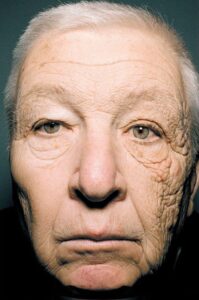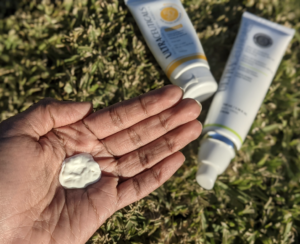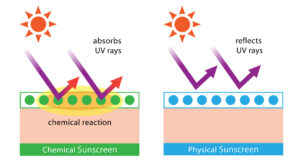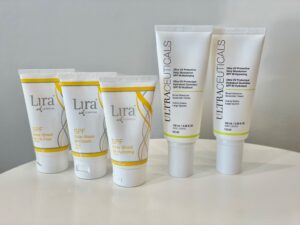For all our clients, no matter what skin condition, age, or situation, our advice is always the same – start with sunscreen! Prevention is always better than a cure!

Let us introduce you to a hidden anti-ageing hero…. SPF! (a.k.a. Sun Protector Factor or sunscreen) – this truly is the key to preventing sun damage, photo-ageing and essentially premature ageing. It is also imperative alongside in-clinic skin treatments because, generally, we are resurfacing your skin. As your new skin is revealed, we want to ensure it is well protected!
Sunscreen works by absorbing most of the sun’s UV rays, and by also reflecting those UV rays away from your skin. The good news is, it’s surprisingly easy to use successfully by following the steps below.
1. Invest in a beneficial sunscreen & wear it EVERY SINGLE DAY!
Even when it is cloudy outside, even if you work indoors, you should be wearing sunscreen, daily! It may sound extreme, but UVA rays account for up to 95% of the UV radiation reaching the earth’s surface and can penetrate clouds and glass. These UVA rays play a major part in photodamage and skin ageing. UVB rays are the chief cause of skin reddening and sunburn damage, which can also lead to premature skin ageing. Both UVA and UVB rays have the potential to cause skin cancers.
For this reason, it is so important to choose a sunscreen that is ‘broad spectrum. Broad Spectrum sunscreens are designed to protect against both UVB and UVA rays. A conventional sunscreen that has an SPF rating only and does not mention the term “Broad Spectrum” may block very little UVA radiation relative to the nominal SPF.
2. Apply the correct amount of sunscreen

Even when we are indoors, in the office, or running daily errands, a minimum of SPF 30 sunscreen should be applied on a daily basis after cleansing. Sunscreen should be applied at least 20 minutes before going outdoors and reapplied every two hours, or immediately after swimming or working up a sweat. A minimum of 5ml (approximately one teaspoon) of sunscreen should be applied to each limb, plus the face, and ears.

A chemical sunscreen (1) absorbs the incoming UV rays, (2) converts the rays into heat, and, (3) releases them from the body. Chemical sunscreens often feel lighter and more unnoticeable for daily wear, and can be easier to lay under/reapply over makeup.
A physical sunscreen (1) sits on top of the skin, and, (2) reflects the sun’s rays. Titanium oxide and zinc are usually the main mineral ingredients of physical sunscreens. When using physical sunscreens, there is no wait time before heading out into the sun, and it can tend to be better for more sensitive or reactive skins.

You now have our permission to enjoy the wonderful sunshine, under the proviso that you adopt the above daily rituals in order to reap the reward of healthy and happy skin in the future. Want to know the must-have topical Vitamins to keep your skin youthful?! Head over to our ACE your way to amazing skin for incredible age management tips.
TUE: 9.30am – 9pm
WED: 9.30am – 5.30pm
THU: 9.30am – 9pm
FRI: 9.30am – 5.30pm
SAT: 7.30am – 4pm
SUN & MON: CLOSED